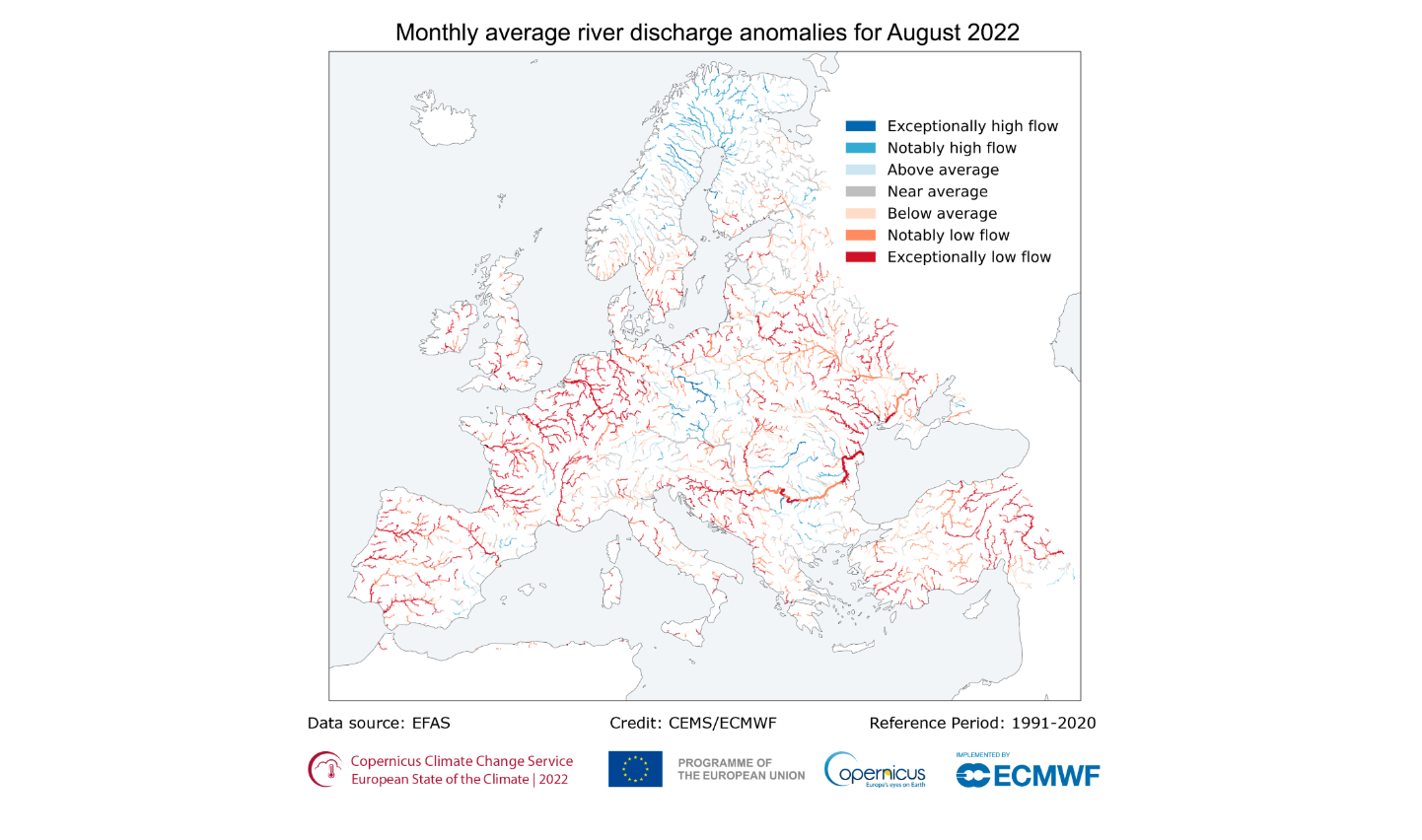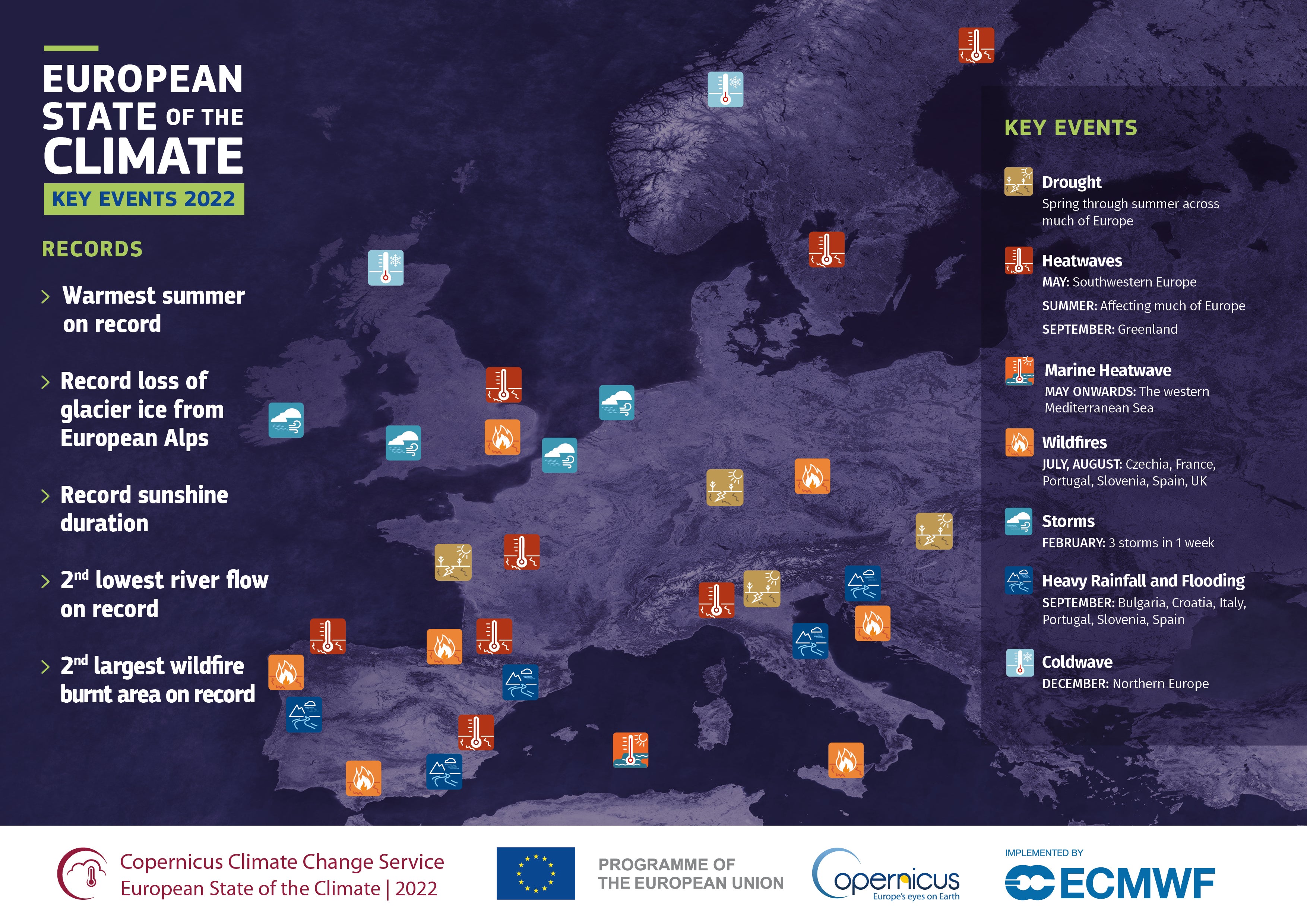Europe was blighted by unprecedented heat, drought and fires in 2022 – and more is on the way
Temperatures in Europe are rising faster than any other continent
Your support helps us to tell the story
From reproductive rights to climate change to Big Tech, The Independent is on the ground when the story is developing. Whether it's investigating the financials of Elon Musk's pro-Trump PAC or producing our latest documentary, 'The A Word', which shines a light on the American women fighting for reproductive rights, we know how important it is to parse out the facts from the messaging.
At such a critical moment in US history, we need reporters on the ground. Your donation allows us to keep sending journalists to speak to both sides of the story.
The Independent is trusted by Americans across the entire political spectrum. And unlike many other quality news outlets, we choose not to lock Americans out of our reporting and analysis with paywalls. We believe quality journalism should be available to everyone, paid for by those who can afford it.
Your support makes all the difference.Europe had its hottest summer ever in 2022, according to a continent-wide assessment published yesterday, leading to a cascade of devastating heatwaves, droughts, wildfires and glacier melt.
Yet more dangerously high temperatures are expected in the coming months. An imminent El Nino event, on top of human-caused climate change, could see new heat records this summer and next, forecasters have warned.
Overall, 2022 was the second hottest year on record, according to the latest State of the Climate report from the European Union’s Copernicus Climate Change Service (C3S). Temperatures in Europe are rising at twice the global average, and faster than any other continent.
On average, the past five years in Europe have been around 2.2 degrees Celsius hotter than 150 years ago.
“The report highlights alarming changes to our climate, including the hottest summer ever recorded in Europe, marked by unprecedented marine heatwaves in the Mediterranean Sea and record-breaking temperatures in Greenland,” said Carlo Buontempo, director of C3S, in a statement.
“Understanding the climate dynamics in Europe is crucial for our efforts to adapt and mitigate the negative impacts climate change has on the continent.”

Intense and prolonged heatwaves took a heavy toll on human health. In southern Europe, there were a record number of days where people experienced “very strong heat stress”, the report said.
More than 20,000 people died during the heatwaves in western European countries in 2022, many of them elderly and vulnerable.
There were more than 3,000 heat-related deaths in England alone, where the temperature breached 40C for the first time.
Scientists later confirmed that the extreme heat would have been “extremely unlikely” without human-caused climate change.
The heat, and lack of rainfall, led to widespread drought and devastating consequences for agriculture, river transport and energy production.

By mid-August, nearly half of Europe was under drought warnings. For the sixth year in a row, below-average flows impacted 63 per cent of European rivers.
The Rhine River, Europe’s second largest, ran dry in August near the German city of Cologne and halted the movement of large shipping vessels.
The drought and soaring heat hampered farming across the continent. Corn production dropped 15 per cent on the previous year, and wheat crop yields also declined, according to an August 2022 report from the US Department of Agriculture’s Foreign Agricultural Service.
The excessive drought and heat was the crucible for raging wildfires in Europe but also across North Africa and the Middle East.
At least a dozen countries including Italy, Spain, France, Greece, Germany and Slovenia suffered huge blazes with thousands of people evacuated and entire communities reduced to ashes.
In the Gironde region of southwestern France, close to 40,000 people were evacuated as 1,000 firefighters and water-bombing aircraft took on the huge blazes.

The summer’s fires burned the second-largest area on record, according to data from the EU’s Joint Research Centre, with carbon emissions reaching 15-year highs.
“We are clearly not prepared for droughts like we have seen in the last year, given the losses in agriculture, scorched plants and fish in dwindling rivers, the impact on transport on rivers and the thousands of human deaths,” Prof Daniela Schmidt, professor in Earth Sciences, University of Bristol and Cabot Institute, said in a statement.
The European Alps saw a record loss of ice from glaciers, meanwhile the situation in the Arctic is increasingly dire as the polar region continues to see rapid temperature rise, and rainfall instead of snow.
In Svalbard, a Norwegian archipelago inside the Arctic Circle, it was the hottest summer on record.
Greenland’s temperatures in September 2022 were up to 8C higher than average, another record, and the island was struck by three different heatwaves. This catastrophic combination caused record ice sheet melt, with at least 23 per cent impacted at the peak of the first heatwave, C3S researchers found.
One silver lining was that hours of sunshine were at a 40-year high, resulting in above-average solar power capacity continent-wide.

Wind speeds last year were virtually equal to its 30-year average for Europe overall. However, it was below average across most of western, central and northeastern Europe, but above average in eastern and southeastern Europe.
“This meant that potential power generation from onshore wind was below-average in most of Europe, especially in southern central regions,” the C3S report noted.
While electricity demand was below average in most areas - due to higher-than-normal temperatures in winter, spring and fall, demand spiked in southern Europe due to air-conditioning to cope with the extreme summer heat.




Join our commenting forum
Join thought-provoking conversations, follow other Independent readers and see their replies
Comments